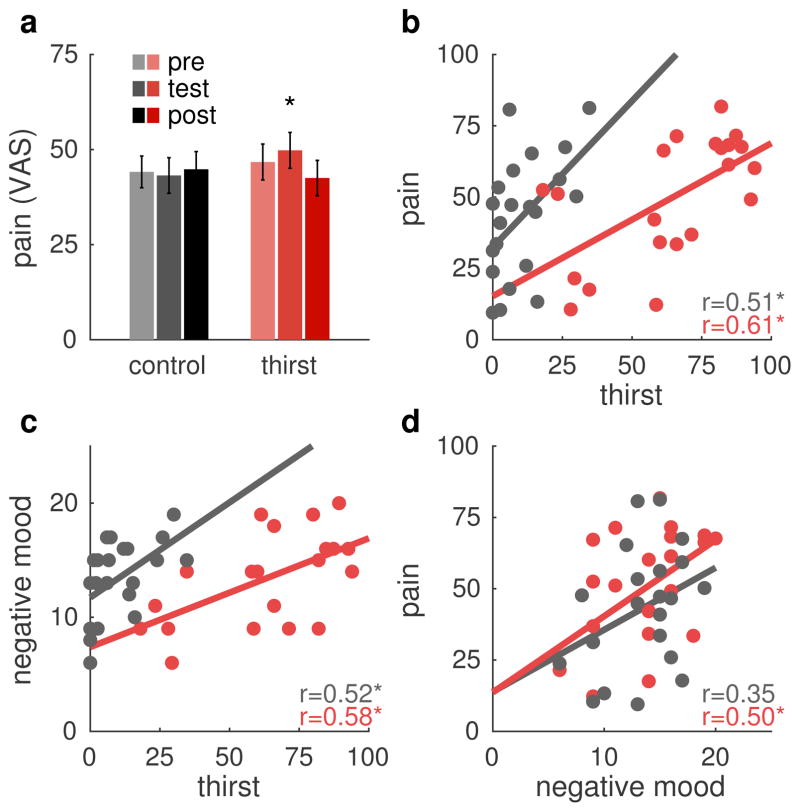Figure 4.
Pain ratings and bivariate relationships. (a) Mean pain ratings for control and thirst groups for the three pain tests. The a priori contrast testing for greater change at pain test 2 in the pain group than in the control group was significant (p=0.02). Errors bars are between participant standard error of the mean. (b) Mean pain ratings at pain test 2 plotted against thirst ratings immediately before the pain test. Thirst and pain correlate positively in both groups, but the intercept is larger in the control group than in the thirst group. (c) Negative mood ratings plotted against thirst at the same time as in b). Stronger thirst correlates with negative feelings. (d) Pain ratings from pain test 2 plotted against the negative mood ratings. Negative mood correlates positively with pain. * p<0.05.

